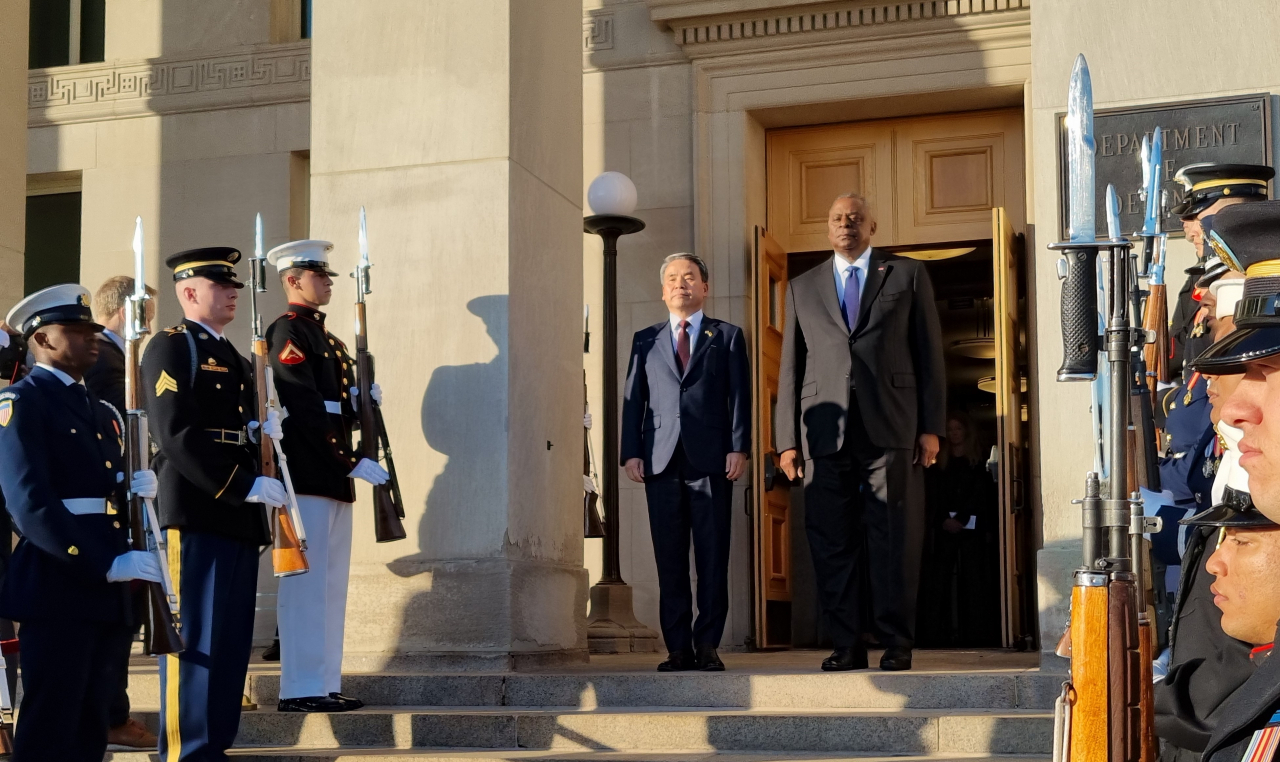S. Korea, US codify 4 categories of 'extended deterrence' cooperation against NK nuke threats
By YonhapPublished : Nov. 4, 2022 - 09:29

South Korea and the United States agreed Thursday on specific categories of "extended deterrence" cooperation against North Korea's evolving nuclear and missile threats, in a move to fortify the credibility of America's security commitment to its Asian ally.
Defense Minister Lee Jong-sup and his US counterpart, Lloyd Austin, reached the agreement at their annual Security Consultative Meeting at the Pentagon amid worries that Pyongyang is ready for a fresh nuclear test that will further compound security challenges facing the allies.
In the joint SCM communique, the two sides spelled out the four linear categories -- information sharing, consultation process, joint planning and execution -- in a decision that would pave the way for Seoul's involvement in those areas, where its role has largely been limited or absent.
The SCM document sets the tone for the allies' defense collaboration amid calls in South Korea for Seoul to pursue a nuclear sharing arrangement akin to that of the North Atlantic Treaty Organization, or other measures to ensure the U.S. adheres to its extended deterrence pledge.
Extended deterrence means America's stated commitment to mobilizing a full range of its military capabilities, both nuclear and conventional, to defend its ally under attack.
Public angst over the North's nuclear threats has deepened as the recalcitrant regime has been pushing to develop tactical nuclear weapons and secure diverse, survivable launch platforms under an aggressive nuclear policy that leaves open the possibility of preemptive strikes.
Concerns also lingered that Pyongyang's push to develop long-range missiles capable of striking the US mainland could make Washington dither on whether to come to the aid of South Korea should it be attacked.
Against this backdrop, Seoul has been pushing to have a say in the process of the US planning and executing Washington's deterrence procedures, including the potential employment of nuclear arms.
Under Thursday's agreement, the South and the US are expected to reinforce the allies' existing intelligence-sharing and consultation apparatuses, and accelerate their ongoing efforts to revise a joint tailored deterrence strategy adopted in 2013.
On the joint execution category, Lee and Austin agreed to hold a table top exercise designed to help service members hone their skills to respond to various nuclear contingency scenarios.(Yonhap)





![[Herald Interview] 'Amid aging population, Korea to invite more young professionals from overseas'](http://res.heraldm.com/phpwas/restmb_idxmake.php?idx=644&simg=/content/image/2024/04/24/20240424050844_0.jpg&u=20240424200058)












![[KH Explains] Korean shipbuilding stocks rally: Real growth or bubble?](http://res.heraldm.com/phpwas/restmb_idxmake.php?idx=652&simg=/content/image/2024/04/25/20240425050656_0.jpg&u=)

